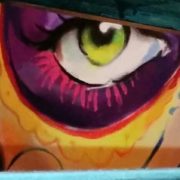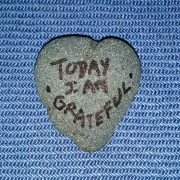Are you looking for a magic pill for anxiety, but without the pill?
As a yoga teacher, you might expect me to tell you that meditation is the answer. And, although meditation has absolutely been shown to reduce symptoms of anxiety, many people who suffer from anxiety get anxious just thinking about the idea of meditation. Instead, non-invasive brain stimulation (i.e., direct neurofeedback) might bring more immediate relief of symptoms, creating space in the mind to contemplate meditation and even begin to practice it!
As someone whose nervous system tends to lean towards anxiety, my yoga practice including but not limited to pranayama, meditation and self-inquiry has brought me much peace over years of practice. Yet, when chaos would begin to brew as it will and I would begin to feel a sense of overwhelm, I would greet my fear all over again, like a familiar (yet not comfortable) old friend. I wondered if all of my body-mind-spirit practices would ever be enough to soothe my root chakra to the point of simply accepting fear for what it is – an early warning system meant to guide me to safety.
It wasn’t until I experienced direct neurofeedback that I sensed that shift in my relationship with fear. I came to understand that trying to train the mind when the brain is caught in a deeply patterned dysfunctional loop can only do so much to soothe my nervous system and create new neural connections. Operating from the conscious mind, we quickly discover that making the unconscious conscious is really hard heart work! Awareness brings understanding and understanding creates an opportunity for choice, yet our unconscious mind can throw so many barriers up to prevent such awareness for fear of breaking our hearts.
When we can work with the body directly – specifically the brain – we can address the root source of the problem, circumventing the barriers of the mind while supporting the body’s self-healing abilities. For anyone that has tried acupuncture, this idea may sound familiar. By soothing the fear centers in the brain, the mind begins to notice space where there was none before. Space to consider our experiences (past and present) in a new light with a new perspective. And when we venture into those places of fear, such as chaos, we have a greater capacity and ability to stand in our own power and not get swept up in that sense of overwhelm. From this place of power, we being to experience a greater sense of connection, to our authentic self as well as to the larger collective consciousness, realizing we are not alone.
When we truly can accept that ‘we are not alone’ into our belief system and we add ‘interdependence’ and compassion to our value system, the fears of uncertainty and unpredictability that underlie anxiety can be replaced with equanimity. With the help of direct neurofeedback, I no longer found myself plagued by the belief that independence is the source of happiness, where shame is abundant when asking for help or support, or the thoughts around needing to be perfect in order to be acceptable and loved, which drove me to exhaustion. Direct neurofeedback appeared to create space in my mind for new beliefs and values much more quickly than psychotherapy and/or yoga alone.
Recent research on non-invasive brain stimulation such as direct neurofeedback in generalized anxiety disorder is beginning to explain such results. If you are interested in reading more, click on the link below:












Leave a Reply
Want to join the discussion?Feel free to contribute!